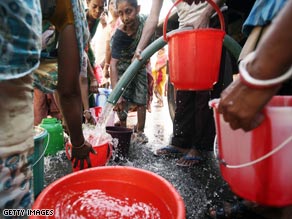Science reporter, BBC News

European scientists and engineers are working on a potential new mission to bring back material from an asteroid.
The venture, known as Marco Polo, could launch in the next decade, and would be designed to learn more about how our Solar System evolved.
The plan is to select a small asteroid - less than 1km across - near Earth and send a spacecraft there to drill for dust and rubble for analysis.
Mission plans are being worked on by UK Astrium and OHB in Germany.
Both satellite manufacturers have been asked to undertake a feasibility study, to assess the type of spacecraft architecture that would be needed to carry out the project.
A final decision on whether to approve the mission will be made by the European Space Agency (Esa) in a few years' time. The mission would launch towards the end of the next decade, in about 2017.
Esa says the mission could fly towards the end of the next decade
Asteroids are the debris left over from the formation of the Solar System about 4.6 billion years ago.
Studying their pristine material should provide new insights on how the Solar System came into being and how planets like Earth evolved.
 Asteroids are the rubble left over after the planets formed |
"We'll be looking at the best solution for getting there and back," UK Astrium's Dr Ralph Cordey told BBC News.
"We've got to look at all elements of the mission - how we would design the mission, how to design the trajectory to one of a number of possible asteroids, how to optimise that so we use the smallest spacecraft, the least fuel and the smallest rocket."
Marco Polo might work like this:
• After the launch on a Soyuz rocket from Europe's Kourou spaceport, a propulsion unit would take the mission out to its target asteroid
• The main spacecraft unit would undertake a remote-sensing campaign, gathering key information on shape, size, mass, spin and global composition
• It would then attempt to land, drilling a few cm into the surface. Up to 300g of dust and pebbles would be stored away in a sealed capsule
• After lifting off the asteroid, the spacecraft would put itself on a homeward trajectory, releasing the capsule close to Earth for a re-entry
• The capsule would land without parachutes. It would be opened in a clean facility to ensure there was no Earth contamination

Esa has an exploration roadmap for the missions it wishes to conduct in the coming years. Marco Polo is being considered under its Cosmic Visions programme, and is one of a number of competing ideas in a class of missions that could cost in the region of 300 million euros.
It is quite possible that Marco Polo, if approved, could be undertaken in partnership with Japan.
Sample return missions are of significant interest to scientists. Although in-situ measurements provide remarkable insights, so much more would be learnt if materials were brought back to Earth laboratories, where the full panoply of modern analytical technologies can be deployed.
 The small return capsule would be released just prior to re-entry |
An asteroid sample return mission would have huge scientific merit in its own right but it would also help develop the technology needed for the more challenging task of getting down and up from a large planetary body that has a much bigger gravitational pull - such as Mars.
Not that getting down on to a small, low-gravity body is easy. The wrong approach could crush landing legs or even result in the vehicle bouncing straight back off into space.
Such problems were amply demonstrated by the recent Japanese attempts to grab samples off the surface of Asteroid Itokawa.
It is still not clear whether Japan's Hayabusa spacecraft managed to capture any material and the probe's return to Earth is still haunted by uncertainty.
The Americans deliberately crash-landed their Near-Shoemaker probe on to Asteroid Eros at the end of the spacecraft's mission in 2001.
They have also sent the Dawn spacecraft to rendezvous with Asteroid Vesta in 2011 before going on to visit Asteroid Ceres in 2015. But these are remote-sensing ventures, not sample return attempts.
Europe, itself, is no novice in the field of asteroid study. Its Rosetta probe, which is en route to a comet, took close-up pictures of Asteroid Steins during a flyby earlier this month.
Ultimately, it is possible that astronauts could visit an asteroid. The US space agency is currently studying how this might be done; but even if approved, such a mission would not happen for many decades.
Jonathan.Amos-INTERNET@bbc.co.uk



